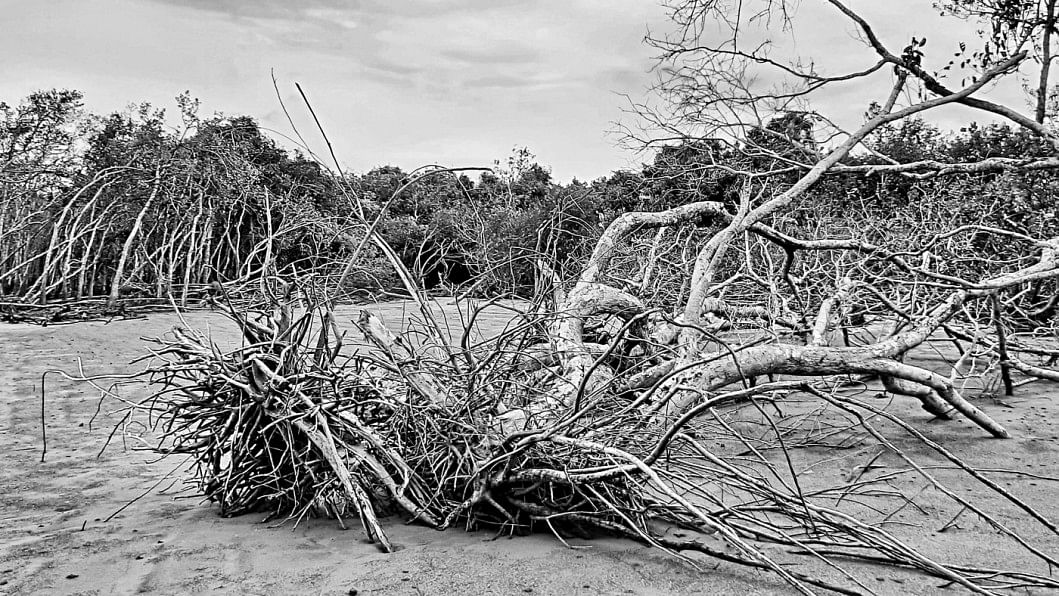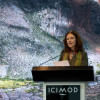Conservation science has moved on. We, too, must adapt and change.

A series of recent media reports – about the proposal to hand over chunks of a reserve forest to different non-forestry departments, the removal of old trees from several cities, and building a road through a reserve forest – highlights the apparent collision between nature conservation and the nation's prosperity.
Humans have cleared forests for habitation, food, fuel, communication and other needs since time immemorial. However, today, the size of the human population has neared the Earth's carrying capacity. The planet's climate is warming, sea levels are rising, and biodiversity is diminishing. The threats resulting from climate warming and loss of nature are no longer theoretical, but a brutal reality. But how have we reached this point? And how has the idea of nature conservation evolved?
Interestingly, humanity did not think about conserving nature until the end of the Middle Ages. Although British botanist John Evelyn proposed the idea of preserving and restoring forests in 1662, others did not act on it for the next 100-plus years. Then came the Industrial Age, which coincided with the Industrial Revolution and the Napoleonic Wars.
During that time, the world ran almost on coal power and durable wood was in great demand for naval shipbuilding. This created concerns over the depletion of timber, leading to the birth of forest management. More specifically, the rulers of Prussia, France and the colonies of British India made cutting valuable trees under a specific size illegal – the beginning of nature conservation with a pointer to sustainability.
The idea of nature conservation gained momentum in the late 18th century when George Perkins Marsh, an American naturalist, argued for the then current generation's ethical responsibility to save nature for the next generation in his famous book Man and Nature (1864). This possibly marked the moment in history when nature began to be valued not just for industry, but for the sake of the environment.

In the 19th century, many countries became keen on nature conservation. Humanity also reached the Age of Oil, reducing the pressure on trees for energy. Meanwhile, in the 1930s, the US experienced a decade-long severe drought. British scientist Guy Stewart Callender looked into the event and suggested carbon emissions through coal-burning might be warming the Earth – the birth of the climate warming idea. US scientist Charles D Keeling followed Callender's work and took CO2 readings from Hawaii and Antarctica for several years, ultimately confirming the global warming theory in the 1950s. By the end of the decade, scientists were convinced that CO2 emissions could be problematic for the environment. The International Union for Conservation of Nature was also established in 1948 to protect nature, mainly for goods, services and environmental benefits.
Finally, we entered the Information Age, when US ecologist Edward O Wilson coined the term "biodiversity" in the 1980s. Following that, the Convention on Biological Diversity (CBD) came into existence in 1992, while the Intergovernmental Panel on Climate Change (IPCC) was established in 1989. The first international agreement to reduce greenhouse gases, the Kyoto Protocol, was signed in 1997.
Of course, many more amendments and protocols to mitigate climate warming and protect biodiversity followed. The latest addition is the Intergovernmental Platform on Biodiversity and Ecosystem Services (IPBES), formed in 2012 to strengthen the role of science in public decision-making on biodiversity and ecosystem services. The IPBES emphasises that nature is not necessarily a wilderness area away from people, but a socio-ecological template where society's day-to-day interactions are a norm.
Nevertheless, today when we talk about nature conservation, we tend to think that the more species an ecosystem carries, the more beneficial it is. However, the idea of nature conservation has evolved once again. The modern concept emphasises conserving species' trait diversity (known as functional diversity) and evolutionary history, because these determine what functions a species performs and what services it provides.
Unsurprisingly, practitioners in developed Asia, Europe, Australia and American countries are now focusing on conserving functional diversity and evolutionary history beyond species. In Bangladesh, however, we are still struggling. We are vocal about saving nature but somewhat reluctant about implementing modern approaches to nature conservation. Although there have been changes, like how our national forest policy just shifted from production forestry to conservation forestry, the focus still lies on species. We must think beyond that and focus on saving functional diversity and evolutionary history.
At the same time, we should urge the government to reverse any conservation-adverse decisions and instead focus on building new nature within socio-ecological templates, such as in and around city open spaces, urban areas and riverbanks. Our ability to save and manage existing nature efficiently and generate new nature is the key to tackling climate and biodiversity crises and, in turn, building a climate-resilient, ecologically civilised and green Bangladesh.
Shekhar R Biswas is a professor of Ecology at East China Normal University in Shanghai.

 For all latest news, follow The Daily Star's Google News channel.
For all latest news, follow The Daily Star's Google News channel. 










Comments